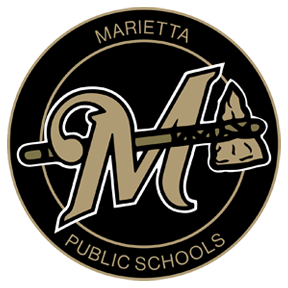A team comprised of parents, department chairs and grade-level lead teachers, counselors, cafeteria staff members, administrators and officials from the District Health Department will meet in Marietta’s new administration building on July 22 to establish policies and procedures for the 2020-21 school year, which is set to begin on August 13.
The team’s plan for the day is to formulate a framework that will allow the district to reopen as safely as possible amid the COVID-19 pandemic.
The re-entry team will discuss several different topics, among them the use of masks. The wearing of masks has been hotly debated, and remains so, particularly after the Oklahoma State Department of Health recently reported the state’s first COVID-related death of a school-aged child.
In the wake of that death, Oklahoma’s State Superintendent of Public Instruction Joy Hofmeister released a statement urging Oklahomans to wear masks when in public, which she called a small sacrifice for the sake of saving lives.
In May, the Centers for Disease Control and Prevention released a list of recommended protocols for school districts planning to return to in-person learning, among them the recommendation of wearing masks.
Another important issue to be discussed is the use of common areas like the school’s cafeteria, libraries, and others, and whether staggering schedules to allow the use of those areas is feasible.
“Also, we have to address ways that parents can drop off and pick up their children, at the same time limiting exposure,” said Superintendent Brandi Naylor.
Busing is another area of concern, one that was addressed in the CDC guidelines. However, the CDC’s suggestions to solve the problem would create several more for a district the size of Marietta’s.
Class changes in the middle and high schools, along with the possibility of intermittent closures requiring the switch from in-person to distance learning are two other topics of discussion, although there will doubtless be many others.
“In light of what we’ve been through and are continuing to go through, planning a return to in-person learning is one of the most difficult things that our school has ever had to do,” said Naylor, “especially given the fluidity of the situation.”
The school frequently receives information about COVID-19, and from different sources, including the CDC, the State Department of Education, and the Oklahoma State Health Department. And much of that information, while useful and welcome, changes quickly and frequently.
The CDC’s guidelines were published in May, but there have been multiple changes since then. The frequency of change is a big part of the reason why the district has waited until now to formulate a plan.
“We want to develop a plan that seeks to protect our students, faculty, and staff,” said Naylor, “but we know two things. One is that because information changes, our protocols will likely change, too. Another is that we can’t make everyone happy.
“Regardless of the plan we develop, there will be those who will find fault. But what a lot of people don’t take into account is that if we don’t reopen, there is a threat to our funding. We are already looking at decreased funding this year due to the economic downturn, not to mention increased costs to follow COVID recommendations.
“If the federal government follows through with threats to decrease funding if we don’t reopen, it would be difficult to maintain our current programs and services.”
To their credit, many parents are worried about the reopening of schools and the threat it poses to their children’s health.
“The thought of even one student or faculty member contracting COVID-19 and becoming gravely ill is something that definitely keeps me up at night,” Naylor remarked. “This is why we must work together to do everything we can feasibly do to protect ourselves and our students, but at the same time protect their education.”
There are other matters to consider, too. While the virus is a threat to physical health, psychologists report that the fear, stress, anxiety, and isolation threaten the mental health of many children. Additionally, the decrease in reporting of child abuse and neglect cases during the quarantine is alarming to many pediatric health experts, especially since they believe that incidents have not decreased, only the reporting of them.
“Another thing that we often don’t stop to think about is that, for some of our kids, school is their safe haven,” explained Naylor, “that for some students who come from abusive homes or those where there isn’t enough to eat, they could be better off at school, even with the risk of re-entry.”
The re-entry team’s plan will be completed in time to be presented for approval at the August 3 meeting of the Board of Education.
The upcoming school year is one of uncertainty, there’s no doubt about it.
“All we can do is use the information we have at our disposal to do the best we can to keep our school family safe, but at the same time get our kids back into the routine of school,” Naylor said. “And until something happens to change that plan, we are going to do what we do best – work together to find the best way to educate children.”
